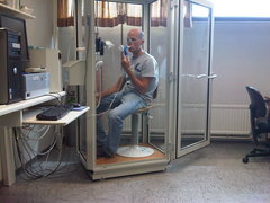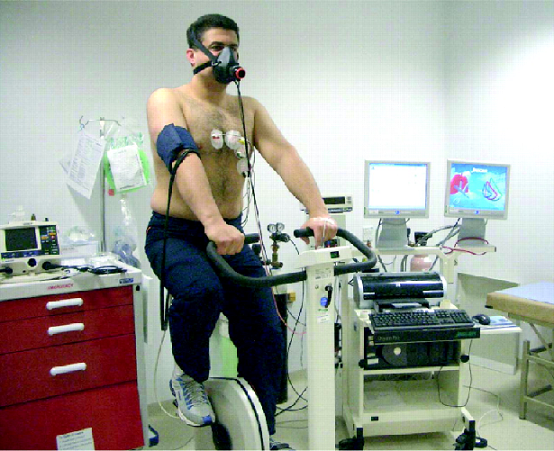Pulmonary fuction tests are a set of examinations that give us information about the functional ability of the lungs, contributing to the diagnosis and monitoring of many diseases.
The examination process is fairly simple as it is carried out in the pulmonary clinic or laboratory by the doctor with special medical devices.
Spirometry
It is the simplest of all tests and is carried out by blowing into a special device, called a spirometer. With spirometry it is possible to assess how easily air enters and goes into the lungs and is the most useful diagnostic test for obstructive conditions such as asthma and COPD. It also helps in assessing the respiratory system in interstitial lung diseases and the respiratory reserve before surgery.
When should one have spirometry
- When someone has a cough, wheezing or shortness of breath
- In pre-operative check
- To monitor known diseases
- When taking medications that can harm the lungs
1. Inhale as deeply as possible with the lips tightly around the mouthpiece.
2. Blow the air continuously as quickly and abruptly as possible.
3. Blow until all of the air is drawn out of the lungs and until the doctor tells you to stop. The expiration usually lasts 6 seconds.

PLETHYSMOGRAPHY - STATIC VOLUME STUDY
Plethysmography is the measurement of the total volume of the lungs and their subdivisions and requires special equipment known as the plethysmograph. It is a test supplementing spirometry. The patient sits in a closed transparent chamber, inhaling and exhaling into a special tube connected to a computer.

DIFFUSING LUNG CAPACITY
It is an accurate and sensitive method that shows how well the lungs exchange gases (carbon dioxide release and oxygen intake). Drugs and diseases that affect diffusion include interstitial lung diseases, heart diseases, lower respiratory tract infections, vascular diseases of the lungs. Diffusing lung capacity helps to diagnose and monitor these diseases and to assess the patient's response to medication.
ERGOSPIROMETRY
It is the most dynamic test and determines the cardiorespiratory function and not only this. All of the functional tests mentioned above are carried out at rest. Ergospirometry is used to diagnose, assess the severity and prognosis of various diseases and evaluate the treatment. It is also used in the measurement of basic metabolism (both at rest and during exercise) and in all professional sports centers for assessing the physical condition of athletes.
The test is carried out either on a static bicycle or on a treadmill and measurements are taken from the cardiovascular, respiratory and musculoskeletal system.
When is a cardiopulmonary stress test needed?
- Pre-operative risk assessment eg
Lung cancer-pneumonectomy
or lung/heart transplantation - Dyspnea at effort of unknown cause
- Reduction of exercise capacity
- Diseases of the respiratory system:
Chronic obstructive pulmonary disease
Extensive bronchiectasis
Cystic fibrosis
Exercise Asthma
Pulmonary hypertension
Pulmonary fibrosis - Cardiovascular disease:
Coronary disease
Heart Failure




